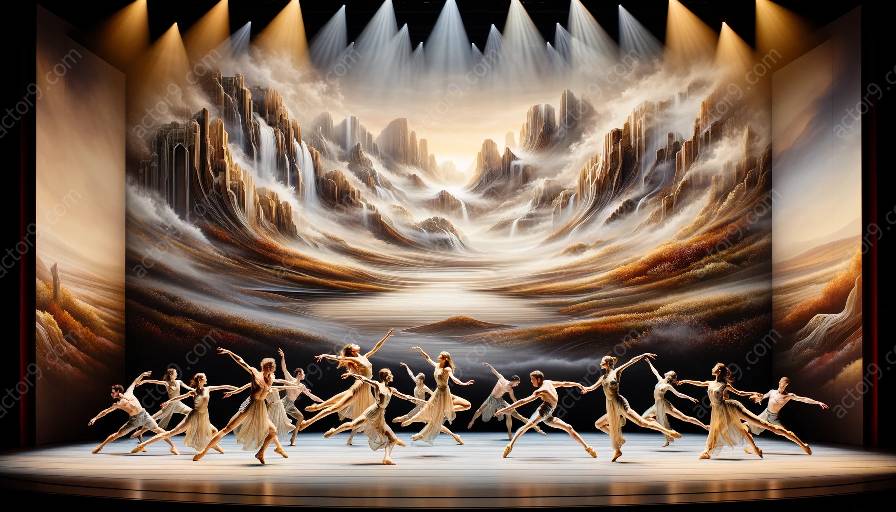Physical theatre involves the use of the body and movement to convey emotions, narratives, and ideas. Within this art form, choreography takes on a unique meaning, blurring the lines between dance, acting, and storytelling. In this comprehensive exploration, we delve into the pivotal role that improvisation plays in shaping and enriching physical theatre choreography.
Understanding Physical Theatre and Choreography
Physical theatre is a dynamic and multifaceted performance style that emphasizes the use of the body, movement, and gesture as the primary means of storytelling and communication. Unlike traditional theatre, physical theatre focuses on the physicality of the performer, often integrating expressive movement, acrobatics, and dance to convey a narrative. Choreography in physical theatre extends beyond conventional dance routines, encompassing a holistic approach to manipulating actions and interactions on stage.
The Significance of Improvisation in Physical Theatre
Improvisation, the spontaneous creation of movements or actions, holds immense significance in the realm of physical theatre choreography. It serves as a vital tool for performers and choreographers to explore, experiment, and uncover new pathways of physical expression. By engaging in improvisational exercises, artists can tap into their creativity and deepen their connection with their bodies, fostering a profound understanding of movement and physical storytelling. This process empowers performers to embody the essence of physical theatre, transcending scripted narratives and delving into the raw, unfiltered emotions and experiences.
Enhancing Creative Expression through Improvisation
One of the key roles of improvisation in physical theatre choreography is its ability to enhance creative expression. By embracing spontaneity and relinquishing preconceived notions, performers can access a realm of authenticity that breathes life into their movements. Improvisation encourages artists to trust their instincts, resulting in performances that are rich in vulnerability and genuine emotional resonance, captivating audiences with the raw intensity of the human experience.
Shaping Dynamic and Organic Movement Sequences
Within the context of physical theatre, choreography extends far beyond predefined sequences of steps or gestures. Instead, it encompasses fluid, organic movement that evolves in response to the performer's physicality and the emotional landscape of the narrative. Improvisation infuses choreography with a sense of dynamism, allowing performers to create spontaneous, captivating sequences that are shaped by the present moment, breathing life into characters and stories in a truly immersive manner.
Fostering Collaboration and Ensemble Work
Physical theatre thrives on the synergy between performers, requiring a profound level of collaboration and ensemble work. Improvisation plays a pivotal role in fostering this interconnectedness, enabling performers to respond to one another in real time, creating cohesive and harmonious group dynamics. Through improvisational exercises, performers develop a shared language of movement, establishing a cohesive choreographic vocabulary that enriches the performance as a whole.
Embracing Vulnerability and Authenticity
Improvisation in physical theatre choreography invites performers to embrace vulnerability and authenticity, transcending the constraints of scripted movements and allowing them to inhabit their characters in a deeply genuine manner. This authenticity breathes life into the performance, creating moments of raw, unfiltered emotion that resonate with audiences on a profound level.
Conclusion
Improvisation in physical theatre choreography serves as a powerful catalyst for creativity, expression, and collaboration. It enables performers to delve into the raw essence of physical storytelling, shaping dynamic movements, and fostering authentic connections within an ensemble. By embracing improvisation, physical theatre choreographers and performers can unlock an unparalleled level of creativity and emotional resonance, elevating the art form to new heights of expressive brilliance.




































